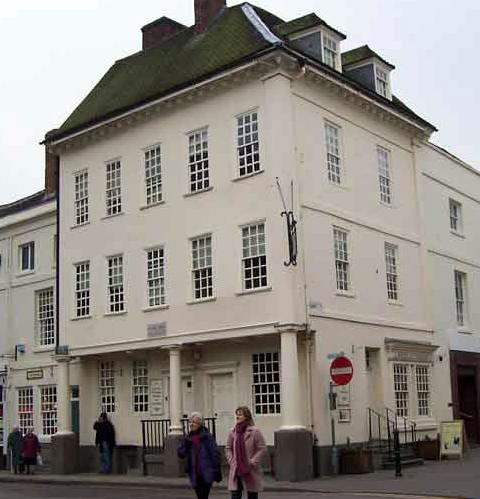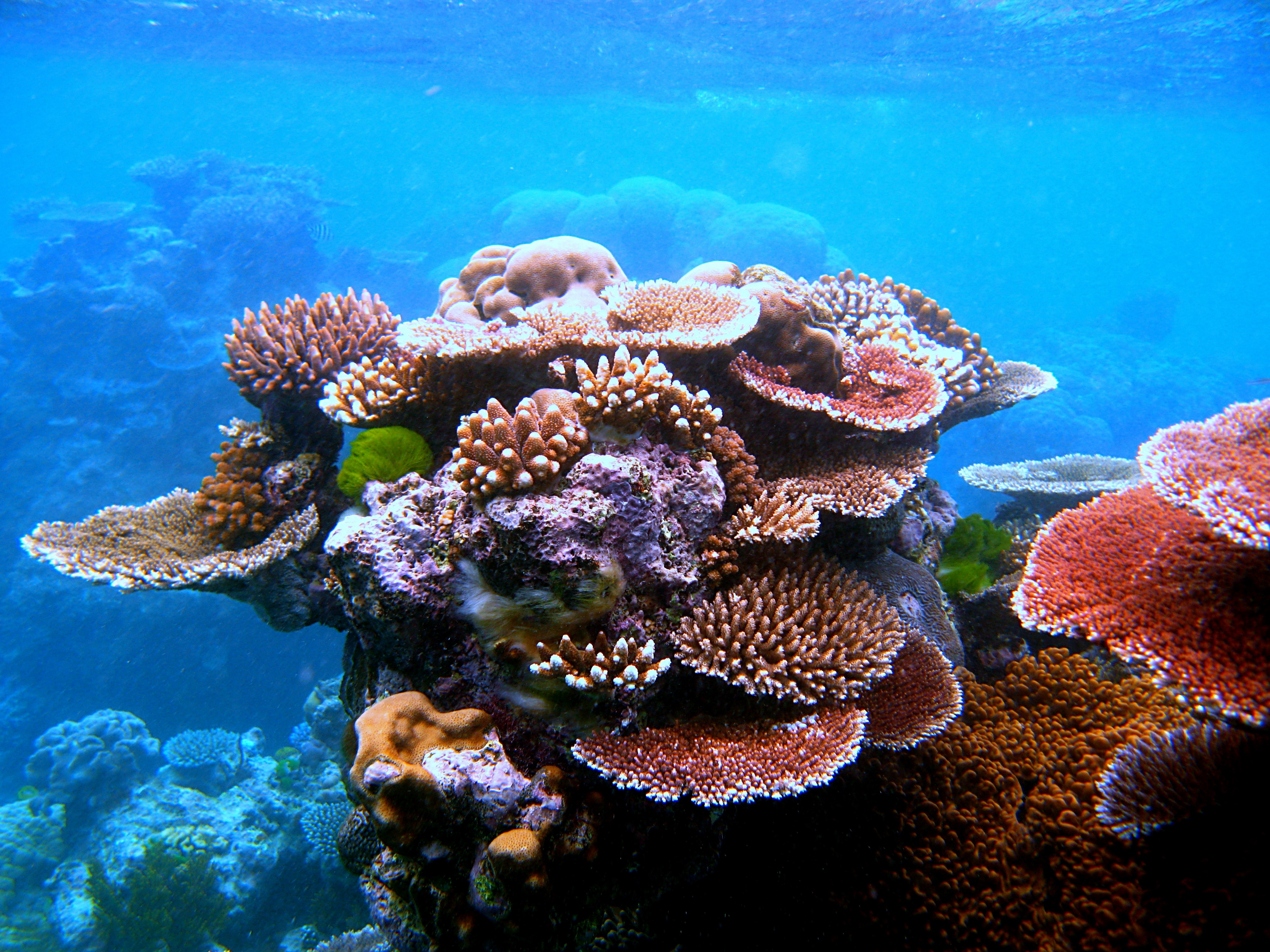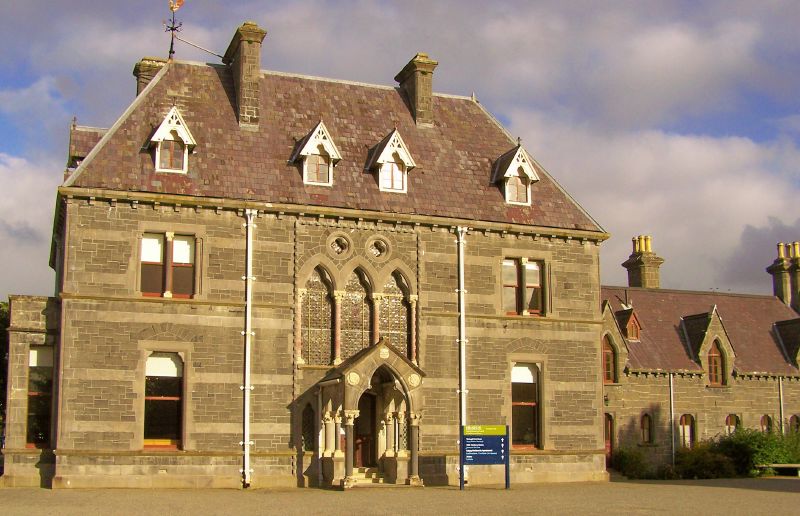|
Dunvegan Cup (engraving, Sometime Before 1851)
The Dunvegan Cup is a wooden ceremonial cup, decorated with silver plates, which dates to 1493. It was created at the request of Caitríona, wife of John Maguire, lord of Fermanagh. Rigby 2003: p. 573–574. The cup is an heirloom of the Macleods of Dunvegan, and is held at their seat of Dunvegan Castle. There are several traditions attributed to the cup, describing how the Macleods obtained it. But scholars believe that the cup was acquired by the clan sometime in the 16th or 17th century. The Macleod chiefs have several other notable heirlooms kept at Dunvegan Castle, such as the Fairy Flag and Sir Rory Mor's Horn (''all three pictured right''). Description The Dunvegan Cup is a wooden ceremonial cup, made of wood and elaborately decorated with silver. It is square shaped at the top and rounded at the bottom, and stands on four legs. Sir Walter Scott examined the cup and, in 1815 in ''The Lord of the Isles'', gave its measurements as: in height on the outside, in depth in t ... [...More Info...] [...Related Items...] OR: [Wikipedia] [Google] [Baidu] |
Dunvegan Cup, Fairy Flag, Rory Mor's Horn (photo, Sometime Before 1927)
Dunvegan ( gd, Dùn Bheagain) is a village on the Isle of Skye in Scotland. It is famous for Dunvegan Castle, seat of the chief of Clan MacLeod. Dunvegan is within the parish of Duirinish, and Duirinish Parish Church is at Dunvegan. In 2011 it had a population of 386. Name In ''The Norse Influence on Gaelic Scotland'' (1910), George Henderson suggests that the name ''Dùn Bheagain'' derives from Old Gaelic ''Dùn Bheccáin'' ( hefort of Beccán), Beccán being a Gaelic personal name. ''Dùn Bheagain'' would not mean 'little fort' as this would be ''Dùn Beag'' in Gaelic. Geography Dunvegan sits on the shores of the large Loch Dunvegan, and the Old School Restaurant in the village is noted for its fish, caught freshly from the loch itself. Dunvegan is situated at the junction of the A850, and the A863. The B884 road also has a junction with the A863, at the eastern end of Dunvegan. Demography Dunvegan's permanent population is declining. However, numbers staying in the area d ... [...More Info...] [...Related Items...] OR: [Wikipedia] [Google] [Baidu] |
Silver-gilt
Silver-gilt or gilded/gilt silver, sometimes known in American English by the French term vermeil, is silver (either pure or sterling) which has been gilded with gold. Most large objects made in goldsmithing that appear to be gold are actually silver-gilt; for example most sporting trophies (including medals such as the gold medals awarded in all Olympic Games after 1912) and many crown jewels are silver-gilt objects. Apart from the raw materials being much less expensive to acquire than solid gold of any karat, large silver-gilt objects are also noticeably lighter if lifted, as well as more durable (gold is much heavier than even lead and is easily scratched and bent). For objects that have intricate detail like monstrances, gilding greatly reduces the need for cleaning and polishing, and so reduces the risk of damage. Ungilded silver would suffer oxidation and need frequent polishing; gold does not oxidize at all. The "gold" threads used in embroidered goldwork are normal ... [...More Info...] [...Related Items...] OR: [Wikipedia] [Google] [Baidu] |
Somerled
Somerled (died 1164), known in Middle Irish as Somairle, Somhairle, and Somhairlidh, and in Old Norse as Sumarliði , was a mid-12th-century Norse-Gaelic lord who, through marital alliance and military conquest, rose in prominence to create the Kingdom of Argyll and the Isles. Little is certain of Somerled's origins, although he may have been born in northern Ireland and appears to have belonged to a Norse–Gaelic family of some prominence. His father, GilleBride, of royal Irish ancestry, appears to have conducted a marriage alliance with Máel Coluim mac Alaxandair, son of Alexander I of Scotland, and claimant to the Scottish throne. During a period of alliance with David I of Scotland, Somerled married Ragnhild, daughter of Óláfr Guðrøðarson, King of Man and the Isles in 1140. In 1153, Olaf of Man died and was succeeded by his son, Godred. But Godred Olafsson was a very unpopular ruler. Somerled was asked by Thorfinn Ottarson, a Manx chief, to allow Somerled's son, Dug ... [...More Info...] [...Related Items...] OR: [Wikipedia] [Google] [Baidu] |
Thomas Pennant
Thomas Pennant (14 June OS 172616 December 1798) was a Welsh naturalist, traveller, writer and antiquarian. He was born and lived his whole life at his family estate, Downing Hall near Whitford, Flintshire, in Wales. As a naturalist he had a great curiosity, observing the geography, geology, plants, animals, birds, reptiles, amphibians and fish around him and recording what he saw and heard about. He wrote acclaimed books including ''British Zoology'', the ''History of Quadrupeds'', ''Arctic Zoology'' and ''Indian Zoology'' although he never travelled further afield than continental Europe. He knew and maintained correspondence with many of the scientific figures of his day. His books influenced the writings of Samuel Johnson. As an antiquarian, he amassed a considerable collection of art and other works, largely selected for their scientific interest. Many of these works are now housed at the National Library of Wales. As a traveller he visited Scotland and many other parts ... [...More Info...] [...Related Items...] OR: [Wikipedia] [Google] [Baidu] |
James Boswell
James Boswell, 9th Laird of Auchinleck (; 29 October 1740 ( N.S.) – 19 May 1795), was a Scottish biographer, diarist, and lawyer, born in Edinburgh. He is best known for his biography of his friend and older contemporary the English writer Samuel Johnson, which is commonly said to be the greatest biography written in the English language. A great mass of Boswell's diaries, letters and private papers were recovered from the 1920s to the 1950s, and their ongoing publication by Yale University has transformed his reputation. Early life Boswell was born in Blair's Land on the east side of Parliament Close behind St Giles' Cathedral in Edinburgh on 29 October 1740 ( N.S.). He was the eldest son of a judge, Alexander Boswell, Lord Auchinleck, and his wife Euphemia Erskine. As the eldest son, he was heir to his family's estate of Auchinleck in Ayrshire. Boswell's mother was a strict Calvinist, and he felt that his father was cold to him. As a child, he was delicate. Kay Jamison, P ... [...More Info...] [...Related Items...] OR: [Wikipedia] [Google] [Baidu] |
Samuel Johnson
Samuel Johnson (18 September 1709 – 13 December 1784), often called Dr Johnson, was an English writer who made lasting contributions as a poet, playwright, essayist, moralist, critic, biographer, editor and lexicographer. The ''Oxford Dictionary of National Biography'' calls him "arguably the most distinguished man of letters in English history". Born in Lichfield, Staffordshire, he attended Pembroke College, Oxford until lack of funds forced him to leave. After working as a teacher, he moved to London and began writing for ''The Gentleman's Magazine''. Early works include '' Life of Mr Richard Savage'', the poems ''London'' and '' The Vanity of Human Wishes'' and the play ''Irene''. After nine years' effort, Johnson's '' A Dictionary of the English Language'' appeared in 1755, and was acclaimed as "one of the greatest single achievements of scholarship". Later work included essays, an annotated ''The Plays of William Shakespeare'', and the apologue '' The History of ... [...More Info...] [...Related Items...] OR: [Wikipedia] [Google] [Baidu] |
Daniel Wilson (academic)
Sir Daniel Wilson FSA (Scot) FRSE LLD (January 5, 1816 – August 6, 1892) was a Scottish-born Canadian archaeologist, ethnologist and author. Life Wilson was born at 55 Potterow in Edinburgh on 3 January 1816, the son of Archibald Wilson and his wife, Janet Aitken. His father is listed in directories as a book-binder, but some records state he was a wine-dealer. He was educated at the Royal High School. He was apprenticed as an engraver around 1830 then went to London, and worked in the studio of J. M. W. Turner. His skills as a water-colour painter came back into play much later in his career. Wilson returned to Edinburgh in 1842, and was appointed Secretary of the Society of Antiquaries of Scotland in 1845. He corresponded with Christian Jürgensen Thomsen and J. J. A. Worsaae, who had established the exhibition of the prehistoric material in the Danish national museum in Copenhagen in terms of the Three-age system – the succession of a Stone Age by a Bronze Age and a ... [...More Info...] [...Related Items...] OR: [Wikipedia] [Google] [Baidu] |
Mether
A mether (; ga, meadar) is a communal or 'Friendship' drinking vessel from the Celtic tradition, mainly in Ireland and originally solely for mead with old examples being made of wood although they might have silver ornamentation added at a later date. The name 'Mether' is said to be derived from 'meth' that is the old name for mead as in the Welsh for mead that is 'medd', and the word 'metheglin' derived from the compound word 'meddyglyn', 'healing liquor'. Examples of wooden methers have been recovered from Irish peat bogs. Another possibility is that the name may come from the Irish Gaelic “Mehill” meaning a 'gathering'.Mullingar Pewter Methers The best known ancient Mether in Scotland is the Dunvegan Cup, which is a 10th-century wooden example provided wi ... [...More Info...] [...Related Items...] OR: [Wikipedia] [Google] [Baidu] |
Coral
Corals are marine invertebrates within the class Anthozoa of the phylum Cnidaria. They typically form compact colonies of many identical individual polyps. Coral species include the important reef builders that inhabit tropical oceans and secrete calcium carbonate to form a hard skeleton. A coral "group" is a colony of very many genetically identical polyps. Each polyp is a sac-like animal typically only a few millimeters in diameter and a few centimeters in height. A set of tentacles surround a central mouth opening. Each polyp excretes an exoskeleton near the base. Over many generations, the colony thus creates a skeleton characteristic of the species which can measure up to several meters in size. Individual colonies grow by asexual reproduction of polyps. Corals also breed sexually by spawning: polyps of the same species release gametes simultaneously overnight, often around a full moon. Fertilized eggs form planulae, a mobile early form of the coral polyp which, when matu ... [...More Info...] [...Related Items...] OR: [Wikipedia] [Google] [Baidu] |
National Museum Of Ireland
The National Museum of Ireland ( ga, Ard-Mhúsaem na hÉireann) is Ireland's leading museum institution, with a strong emphasis on national and some international archaeology, Irish history, Irish art, culture, and natural history. It has three branches in Dublin, the archaeology and natural history museums adjacent on Kildare Street and Merrion Square, and a newer Decorative Arts and History branch at the former Collins Barracks, and the Country Life museum in County Mayo. History Predecessors The National Museum of Ireland descends from the amalgamation of parts of the collections of a number of Dublin cultural institutions from the 18th and 19th centuries, including primarily the Royal Dublin Society (RDS) and the Royal Irish Academy (RIA). The earliest parts of the collections are largely geological and mineralogical specimens, which the RDS collected as a means to improve the knowledge and use of such resources in Ireland. The establishment of the museum collection ... [...More Info...] [...Related Items...] OR: [Wikipedia] [Google] [Baidu] |
Domnach Airgid
The Domnach Airgid (; also Domhnach Airgid, English: Silver Church or Shrine of Saint Patrick's Gospels)Shrine of Saint Patrick's Gospels: early 20th century (original dated 1080–1100) . New York: . Retrieved 2 July 2021 is an 8th-century Irish wooden . It was considerably reworked between the 13th and 15th centuries and became a or "book sh ... [...More Info...] [...Related Items...] OR: [Wikipedia] [Google] [Baidu] |
Eternity
Eternity, in common parlance, means infinite time that never ends or the quality, condition, or fact of being everlasting or eternal. Classical philosophy, however, defines eternity as what is timeless or exists outside time, whereas sempiternity corresponds to infinite duration. Philosophy Classical philosophy defines eternity as what exists outside time, as in describing timeless supernatural beings and forces, distinguished from sempiternity which corresponds to infinite time, as described in requiem prayers for the dead. Some thinkers, such as Aristotle, suggest the eternity of the natural cosmos in regard to both past and future eternal duration. Boethius defined eternity as "simultaneously full and perfect possession of interminable life". Thomas Aquinas believed that God's eternity does not cease, as it is without either a beginning or an end; the concept of eternity is of divine simplicity, thus incapable of being defined or fully understood by humankind. Thomas H ... [...More Info...] [...Related Items...] OR: [Wikipedia] [Google] [Baidu] |
.jpg)

.jpg)




